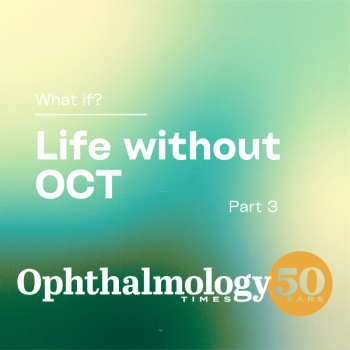
SITA offers clinicians an other tool for visual field evaluation
Ann Arbor, MI-The Swedish Interactive Threshold Algorithm (SITA) is one of the newer generations of perimetry basic detection devices used in glaucoma to evaluate visual fields. The others are short wavelength automated perimetry and frequency doubling technology. Emerging technologies include high-pass resolution perimetry and multifocal electrophysiological tests. Sayoko E. Moroi, MD, PhD, recently discussed SITA and how to use the test to the best advantage.
"The purpose of perimetry is to determine the minimum luminescence for detecting the light stimulus, which will vary by wavelength, size, and static versus flicker versus movement," said Dr. Moroi, associate professor of ophthalmology and visual sciences, Kellogg Eye Center, University of Michigan, Ann Arbor. "The goal of these tests is to detect disease and progression of visual field damage."
Dr. Moroi explained the basics of SITA, the data on the printout, and the correlation between the printout and the patient's examination.
"It starts at four primary points of the visual field and changes the light stimulus in a staircase of 4 to 2 dB. At the adjacent sites, the test calculates the threshold at these four primary points and goes on to test the adjacent sites. SITA uses real-time calculations so that it can be a 'smart test' and stop testing an area when needed. This then cuts down on test time," Dr. Moroi explained.
The SITA Fast also starts at the four primary points but at the adjacent points uses only the 4-dB stimuli, she said.
The SITA test printout conveys several different data. The first, according to Dr. Moroi, are the demographics, the test condition, and the performance, all of which are available at the top of the printout.
When attempting to assess the visual field data, the clinician looks at the grayscale pattern, the total and pattern deviations, the glaucoma hemifield test, indices, and the interpretation.
"This is done critically to ensure that the evaluation is not affected by artifacts from a malpositioned lens, ptosis, a prominent brow, a 'trigger-happy' patient, or a cloverleaf pattern," she said.
When evaluating the glaucoma hemifield test, the clinician specifically wants to compare the pattern deviation across five horizontal zones, which are indicated on the printout.
The gaze tracker, according to Dr. Moroi, is used to determine the patient's fixation. She demonstrated the results achieved with the gaze tracker in various patients. In one patient, for example, fixation losses could be seen because of the blinks, ptosis, or eyelashes.
Dr. Moroi emphasized the importance of ascertaining whether the test correlates with the results of the patient's examination. "We must always interpret the results in the context of the patient," she said. "For example, was the patient appropriately positioned in relation to the machine? Was the data entry correct? Was the correct eye tested? Did the patient understand how the testing was carried out? Was the patient sufficiently alert to take the test? What was the visual acuity? Was the patient cooperative, bored, or sleepy? In addition, did the patient have media opacities, retinal pathologies, or other optic nerve pathologies?"
When converting from Humphrey visual field full threshold to the SITA, the grayscale will be lighter. A new baseline needs to be determined.
"In summary, the advantages of SITA include the following: it is a more sensitive test; it is a shorter test, thus causing less fatigue problems; the results are more reliable; and there is less variation between tests," she concluded. "Finally, the test results must always be interpreted in the context of the patient."
Newsletter
Don’t miss out—get Ophthalmology Times updates on the latest clinical advancements and expert interviews, straight to your inbox.



















































.png)


